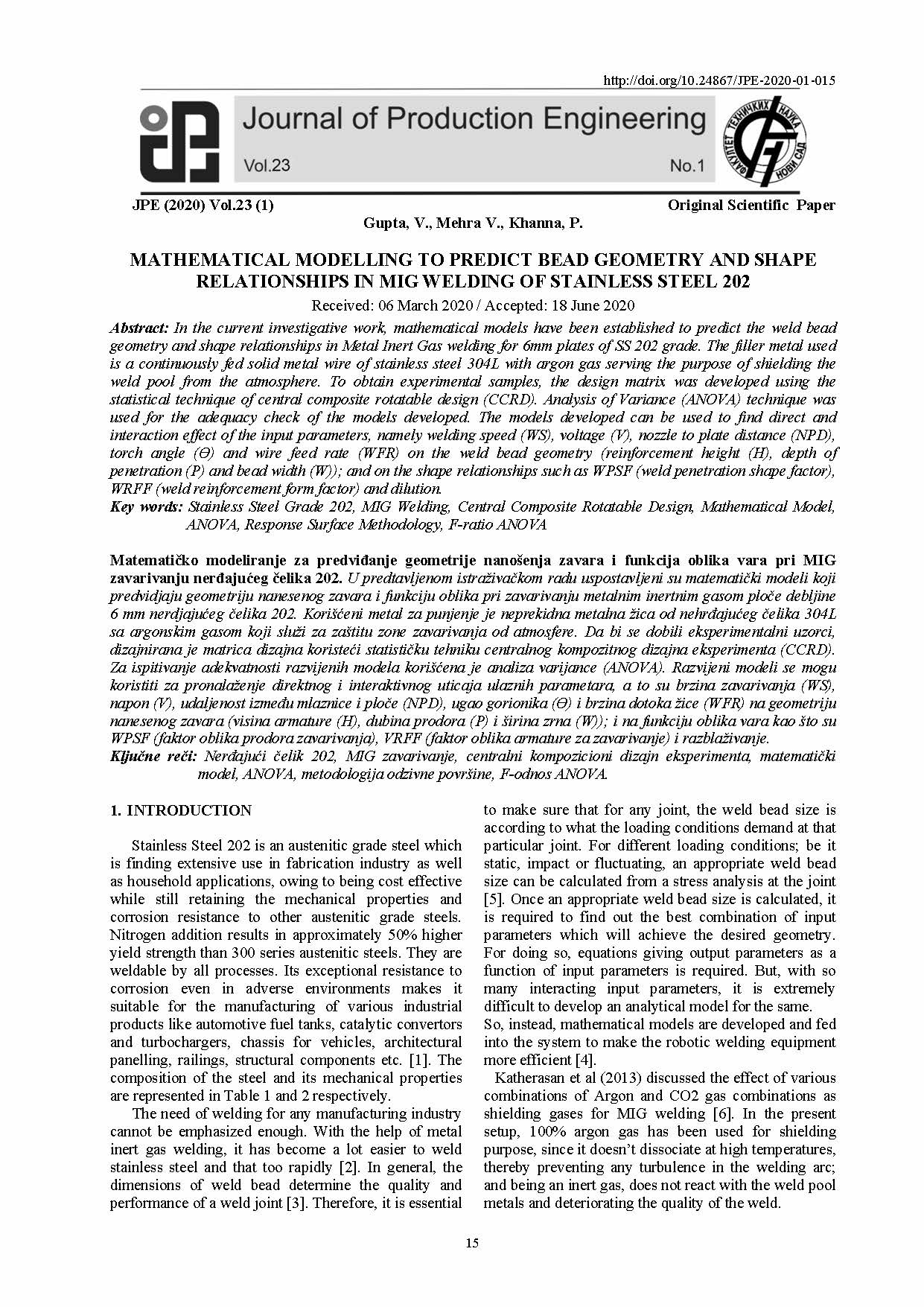Mathematical modelling to predict bead geometry and shape relationships in mig welding of stainless steel 202

Published 2020-06-30
abstract views: 36 // FULL TEXT ARTICLE (PDF): 31
Keywords
- Stainless Steel Grade 202,
- MIG Welding,
- CCD,
- ANOVA
How to Cite
Copyright (c) 2023 Journal of Production Engineering

This work is licensed under a Creative Commons Attribution 4.0 International License.
Abstract
In the current investigative work, mathematical models have been established to predict the weld bead geometry and shape relationships in Metal Inert Gas welding for 6mm plates of SS 202 grade. The filler metal used is a continuously fed solid metal wire of stainless steel 304L with argon gas serving the purpose of shielding the weld pool from the atmosphere. To obtain experimental samples, the design matrix was developed using the statistical technique of central composite rotatable design (CCRD). Analysis of Variance (ANOVA) technique was used for the adequacy check of the models developed. The models developed can be used to find direct and interaction effect of the input parameters, namely welding speed (WS), voltage (V), nozzle to plate distance (NPD), torch angle (Ɵ), and wire feed rate (WFR) on the weld bead geometry (reinforcement height (H), depth of penetration (P), and bead width (W)); and on the shape relationships such as WPSF (weld penetration shape factor), WRFF (weld reinforcement form factor), and dilution.

